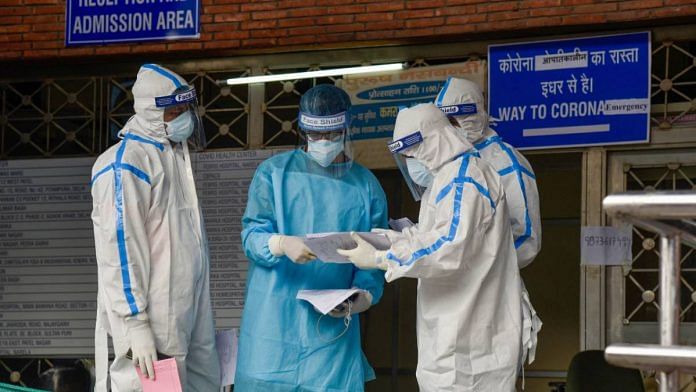
New Delhi: Five months into the coronavirus pandemic and scientists across the world continue to make new revelations about the virus that has claimed over 492,153 lives so far.
Here are some of the latest scientific findings around SARS-CoV-2.
‘Heart-shaped’ enzyme that helps SARS-CoV-2 multiply
Scientists have carried out the first room-temperature X-ray measurements on the SARS-CoV-2 main protease, the enzyme that enables the virus to reproduce inside cells.
These measurements will help scientists build a comprehensive 3D-model of the protein, which can then be used in simulations to find drugs that can block the viral replication.
The study, published in the Nature Communications, shows that the enzyme is shaped like a heart. This is the first time the structure of this enzyme has been measured at room temperature, which is significant because it is close to the physiological temperature where the cells operate, the researchers have said.
The study also revealed significant structural disparities between structures of the protease in frozen samples and those at room temperature. The research suggests that modelling the coronavirus structure based on frozen samples results in a less accurate understanding of the virus and its mechanisms.
Also read: Favipiravir, Japanese drug that’s the new Covid treatment hope your chemist will soon stock
Scientists identify unique molecule patterns in Covid patients
Scientists have identified a unique pattern of six molecules produced by the human body’s immune system in response to Covid-19, which could serve as therapeutic targets to counter the virus.
Covid-19 infection can trigger the immune system to overreact and cause a cytokine storm — toxic proteins that damage healthy cells.
Clinicians have been trying to address this hyperinflammation but without evidence of what to target, researchers have said.
The research, published in the Critical Care Explorations, included 30 participants: 10 Covid-19 patients, 10 suffering from other infections and 10 healthy participants.
Blood sampled from the participants revealed that six molecules were uniquely elevated in Covid-19 ICU patients — tumor necrosis factor, granzyme B, heat shock protein 70, interleukin-18, interferon-gamma-inducible protein 10 and elastase 2.
Using artificial intelligence to validate the results, researchers found that screening for these molecules can help predict the presence of Covid-19 in critically-ill patients with a 98 per cent accuracy.
Early childhood vaccines may protect children from Covid-19
Scientists have hypothesised that measles, mumps, and rubella (MMR) vaccines could protect children from Covid-19.
Existing data shows that Covid-19 is less common and milder in children younger than 10 years of age. However, what makes children less susceptible remains unclear.
A study, published in the Frontiers in Molecular Biosciences, have now provided evidence that MMR vaccination might be a reason why children have protection against the viral disease.
The hypothesis is backed up by the sequence similarity data of SARS-CoV-2 with both measles and rubella viruses.
The antibodies produced in children due to the MMR vaccine can recognise some protein parts on the SARS-CoV-2 spike proteins. These antibodies may help block entry of the virus into the cells.
However, an experimental analysis is required in order to support the hypothesis.
Asymptomatic Covid-19 patients also contaminate environment
Asymptomatic Covid-19 patients have the capability of contaminating their surroundings, just like patients who show symptoms, according to a study based on data from China.
The data, published in mSphere, shows the importance of environmental cleaning in areas occupied by patients with Covid-19.
For the study, the team had analysed samples from ICU rooms with confirmed Covid-19 patients as well as surroundings of asymptomatic people. The samples were taken from various surfaces including bedrails, room and toilet door handles, light switches, sink and toilet bowls, bedside tables, bedsheets and pillows.
The researchers found that 44 of 112 surface samples were positive for SARS-Cov-2.
The findings suggest that patient surroundings in isolation wards with mild disease or no symptoms were extensively contaminated by SARS-CoV-2. In a single room with an asymptomatic patient, four sites, including bedrails, pillow, bedsheet and the air exhaust outlet were SARS-CoV-2 positive.
Also read: Most children have mild form of Covid-19, face minute risk of death, Lancet study finds

Hope this discovery will help in improving the vaccines / drugs for covid-19 and quickly.